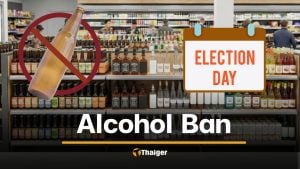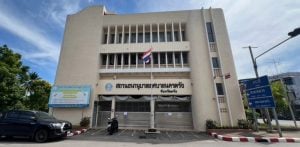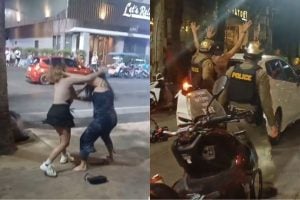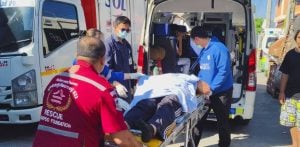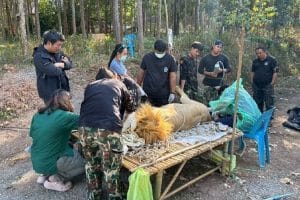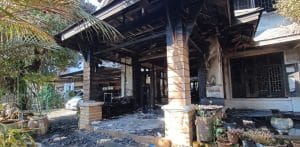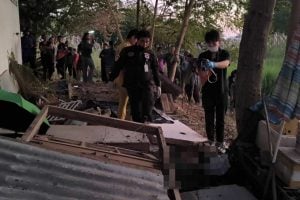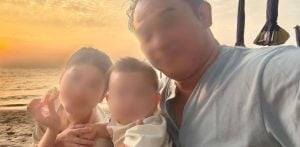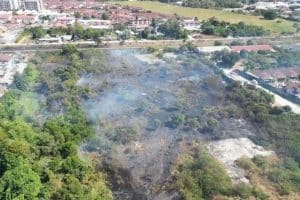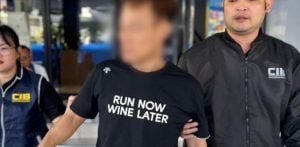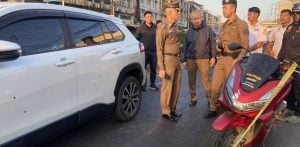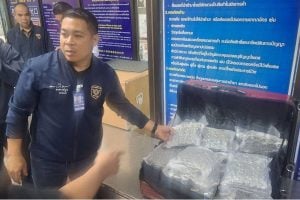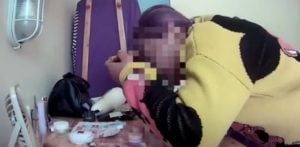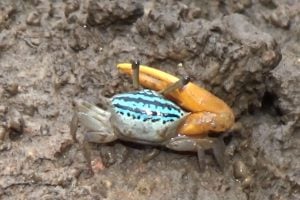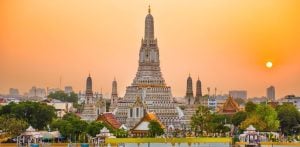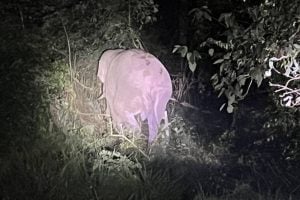Covid-19: Your questions answered

We are living in extraordinary times. With the world forced into a complete shutdown and travel by any means frowned upon and commercial aircraft largely grounded GLOBALLY we are all in #StayAtHome so we can #TravelTomorrow mode. Our national leaders are also making televised addresses reinforcing the gravitas of the moment.
No-one captured the mood of the world better than UK’s Queen Elizabeth II who delivered a coronavirus address earlier this week, to the British people,
“Together we are tackling this disease, if we remain united and resolute, then we will overcome it. I hope in the years to come everyone will be able to take pride in how they responded to this challenge,”
she said calling for unity and concluded by saying “we will succeed”.
Closer to home Thailand’s PM Prayuth Chan-o-cha, in his televised national address said,
“Please rest assured that I will do everything I can to get our country and the Thai people through this most difficult time. Let us fight back together, we must win over this.”
It is worth recording what we know about this pandemic for historical reasons and to look at a few questions that should be answered.
Here’s how California’s LAist is helping to communicate to the wider world. It is worth taking a look as it’s the best in the world. I’m inspired by their straightforward-no-nonsense factual approach which they call the No-Panic Guide To the Coronavirus.
I’ve cherrypicked some of their best questions and answers, ones that have merit to a wider audience and are definitely worth sharing.
THE TIMELINE
• A “Public Health Emergency of International Concern” was declared on January 30, 2020 by the World Health Organisation over an outbreak of a new, deadly, novel coronavirus which began in Wuhan City, China.
• The virus was identified as SARS-CoV-2, which causes a disease called COVID-19 (which is an abbreviation of “coronavirus disease 2019”).
• On March 4 the California Governor made the call to declare an emergency for the state.
• On March 11, WHO made it official: COVID-19 is a pandemic.
• On March 19, California, the USA’s most populous state, ordered its nearly 40 million residents to stay home and practice social distancing.
• On March 26, the United States surpassed China as the country with the highest total number of confirmed COVID-19 cases in the world.
• The global total is now more than 70,000 deaths and over 1.3m confirmed cases, and the numbers continue to climb.
WHAT IS SARS-CoV-2?
SARS-CoV-2 is in the family of coronavirus pathogens that usually cause short-lived illnesses.
They get their name because of how they look, which is spiny around the edges, like a crown. And some coronaviruses are scarier than others. Scientists are still trying to figure out how dangerous this new (or “novel”) coronavirus is.
Most people get infected with these viruses at some point in their lives according to the USA’s Centers for Disease Control and Prevention.
Symptoms may include fever, cough, difficulty breathing, runny nose, and headache.
HOW IS THE CORONAVIRUS SPREAD?
Coronaviruses generally jump from person to person on the droplets from coughs and sneezes.
The current best guess is that the incubation period for novel coronavirus — that’s the time from exposure to when symptoms first start showing up — is somewhere between two and 14 days. Health officials continue to stress the importance of good hand hygiene and washing technique. We still don’t know how easily this coronavirus can spread through the air.
HOW LONG DOES IT LIVE?
It depends on where it is.
The coronavirus is…
- detectable in aerosols for up to three hours
- up to four hours on copper
- up to 24 hours on cardboard
- up to two to three days on plastic and stainless steel
WHAT ARE THE SYMPTOMS OF COVID-19?
Common symptoms can include: low-grade fever, body aches, coughing, nasal congestion, runny nose, sore throat.
Severe symptoms can include: high fever, severe cough, shortness of breath, persistent chest pain or pressure, confusion, bluish lips or face.
These Symptoms may appear 2-14 days after exposure. However, some people infected with the virus have no symptoms. And there also may be additional symptoms beyond what we’ve listed above.
WHAT DO I DO IF I THINK I MIGHT HAVE IT?
If you think you might have been exposed, or have COVID-19 symptoms, call your doctor for next steps. If you experience severe symptoms, get immediate medical attention.
If you are caring for someone with COVID-19 at home:
- Make sure you wear a mask
- Monitor for trouble breathing
- Monitor for persistent chest pain or pressure
- Call their healthcare provider if symptoms become more severe (especially if they’re elderly or have pre-existing conditions).
- Clean surfaces frequently
- Try to keep the patient in one bedroom, and ideally one bathroom
- Don’t shake the laundry before washing, it will spread any virus into the air.
- Restrict unnecessary visitors
- Wash hands frequently
IF I HAD CORONAVIRUS CAN I GET IT AGAIN?
We don’t have conclusive evidence on that, in general you can be protected when you’ve had an infection, but not always. We’re just going to have to wait for the researchers and the scientists to let us know what they’re finding out about that.
IS THERE A VACCINE? WHAT’S THE TREATMENT?
There is no vaccine yet. Scientists started working on a plan in January, before COVID-19 even had a name. A number of companies have been working on vaccine development, and clinical trials are underway. The timeline is unknown.
POTUS (president) has promoted chloroquine and hydroxychloroquine as a possible treatment. Quite a bit is known about the existing drugs, but what isn’t known is if they’re effective at treating the coronavirus.
IS IBUPROFEN SAFE TO TAKE FOR A COVID-19 FEVER?
There’s currently no established link between ibuprofen and coronavirus complications. Based on currently available information, WHO does not recommend against the use of of ibuprofen.
SHOULD I BE WEARING A MASK IN DAILY LIFE?
Yes.
Many Governors and Mayors around the globe are recommending that all residents wear face coverings whenever they’re in public and interacting but you should still stay at home. When you have to go out, we are recommending that you use non medical grade masks.
There are two categories of masks, and who should wear what:
- Surgical masks: These are medical grade, like the N95, and they are reserved for medical professionals.
- Homemade cloth masks: These are bandanas, scarves, hand-sewn masks and the like and should be worn by everyone else, including workers providing other essential services, such as those in food retail and vital infrastructure jobs.
Do not take the ones that are reserved for our first responders, this could save, or cost, a doctor or nurse their life.
We now know from recent studies that a significant portion of individuals with coronavirus lack symptoms (“asymptomatic”) and that even those who eventually develop symptoms (“pre-symptomatic”) can transmit the virus to others before showing symptoms.
This means that the virus can spread between people interacting in close proximity — for example, speaking, coughing, or sneezing — even if those people are not exhibiting symptoms.
In light of this new evidence, we recommend wearing cloth face coverings in public settings where other social distancing measures are difficult to maintain (eg. supermarkets and pharmacies) especially in areas of significant community-based transmission.
Maintaining 6-feet social distancing, is still required, even when wearing a mask.
And the cloth face coverings recommended are not surgical masks or N-95 respirators. There is a shortage of these for medical professionals.
WHAT’S THE SAFEST WAY TO SHOP AT THE GROCERY STORE
Tips for minimising risk at the grocery store…
1. Try to go at a less busy time. Generally, earlier is better, and weekdays seem to be less busy than weekends.
2. If you’re a senior or in another high-risk group, take advantage of the “senior shopping hours” many stores have introduced.
3. Wear a mask if you have one. California is expected to issue some official guidance on mask-wearing soon.
4. Wear latex gloves if you have them, be careful about tearing, and avoid touching your face when they’re on.
5. If you don’t have gloves, use hand-sanitizer with at least 60% alcohol. If you don’t have either, use an plastic produce bag to touch certain items or produce.
6. Before you touch your cart, wipe it down with an antiseptic wipe.
7. While you’re in the store, stay at least 6 feet away from other shoppers.
8. While you’re in the store, touch as few things as possible.
IS THIS CORONAVIRUS LIKE SARS OR MERS?
MERS (Middle East Respiratory Syndrome) and SARS (Severe Acute Respiratory Syndrome) are two members of the coronavirus family that tend to make people sicker. “About 3 or 4 out of every 10 patients reported with MERS have died.” And SARS was responsible for a global outbreak in 2002-2003 that killed 774 people.
The novel coronavirus is more genetically related to SARS than MERS. But scientists don’t know yet if novel coronavirus will act the same way as SARS or MERS; they’re using information from both pathogens to guide their research.
DID NOVEL CORONAVIRUS COME FROM… A BAT?
Scientists say the novel coronavirus “does look like it may be somewhat similar to a bat coronavirus.” But say researchers will need to conduct more genetic sequencing before we can be confident of how the virus started. Some researchers think pangolins might have transmitted the new coronavirus to humans. But we just don’t know for sure yet.
WHICH DISINFECTANTS CAN I USE AGAINST SARS-CoV-2?
Coronaviruses are enveloped viruses, meaning they are one of the easiest types of viruses to kill with the appropriate disinfectant product. Consumers using these disinfectants on an enveloped emerging virus should follow the directions for use on the product’s master label, paying close attention to the contact time for the product on the treated surface (i.e., how long the disinfectant should remain on the surface).
As far as keeping your hands virus-free, handwashing for at least 20 seconds is still your best bet. If that’s not possible, using an “alcohol-based hand sanitizer with at least 60% alcohol is recommended
THE DIFFERENCE BETWEEN QUARANTINE, ISOLATION, AND SOCIAL DISTANCING
All are actions designed to stop or slow down the spread of a contagious disease. Here’s how they differ:
- Quarantine: a separation for people who have a contagious disease, have symptoms consistent with a contagious disease, or were exposed to a contagious disease. A person’s movements are restricted when they are quarantined
- Isolation: a less restrictive separation that keeps people who are sick away from people who are not sick
- Self-Isolation: a voluntary action to stay at home by people who are sick (or are likely to be sick) and are experiencing mild symptoms
- Self-Quarantine: a voluntary action to stay at home by people who may have been exposed but are not experiencing symptoms
- Social Distancing: keeping your distance from other people. The distance reduces the risk of breathing in droplets that are produced when an infected person coughs, sneezes, or (in some cases) breathes. It also mean cancelling events or gatherings
Stay safe, stay well.
Together we can beat this, and we will, of that I am certain.
Andrew J Wood

About the author
Andrew was born in Yorkshire England, he is a professional hotelier, Skalleague and travel writer. Andrew has over 35 years of hospitality and travel experience. He is a hotel graduate of Napier University, Edinburgh. Andrew is a past Director of Skal International (SI), National President SI Thailand and is currently President of SI Bangkok and a VP of both SI Thailand and SI Asia. He is a regular guest lecturer at various Universities in Thailand including Assumption University’s Hospitality School and the Japan Hotel School in Tokyo.
Latest Thailand News
Follow The Thaiger on Google News:



